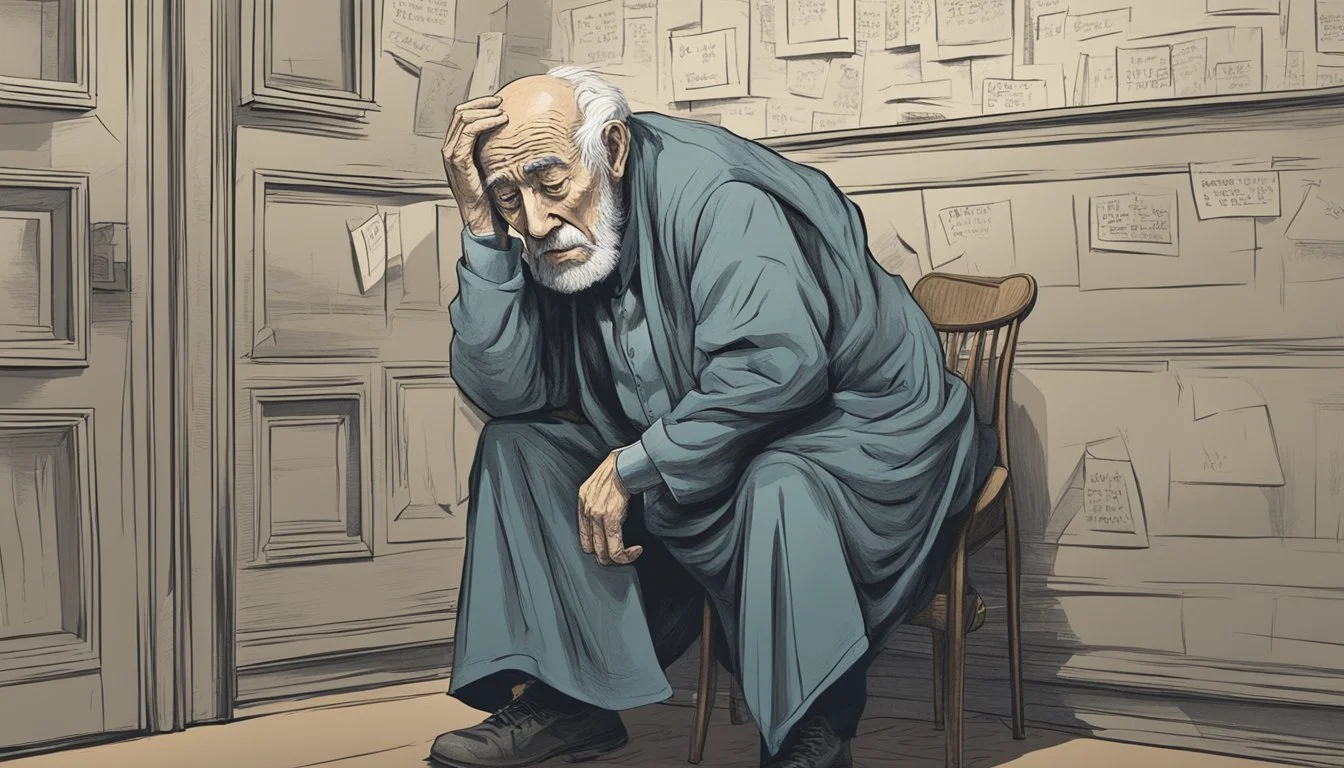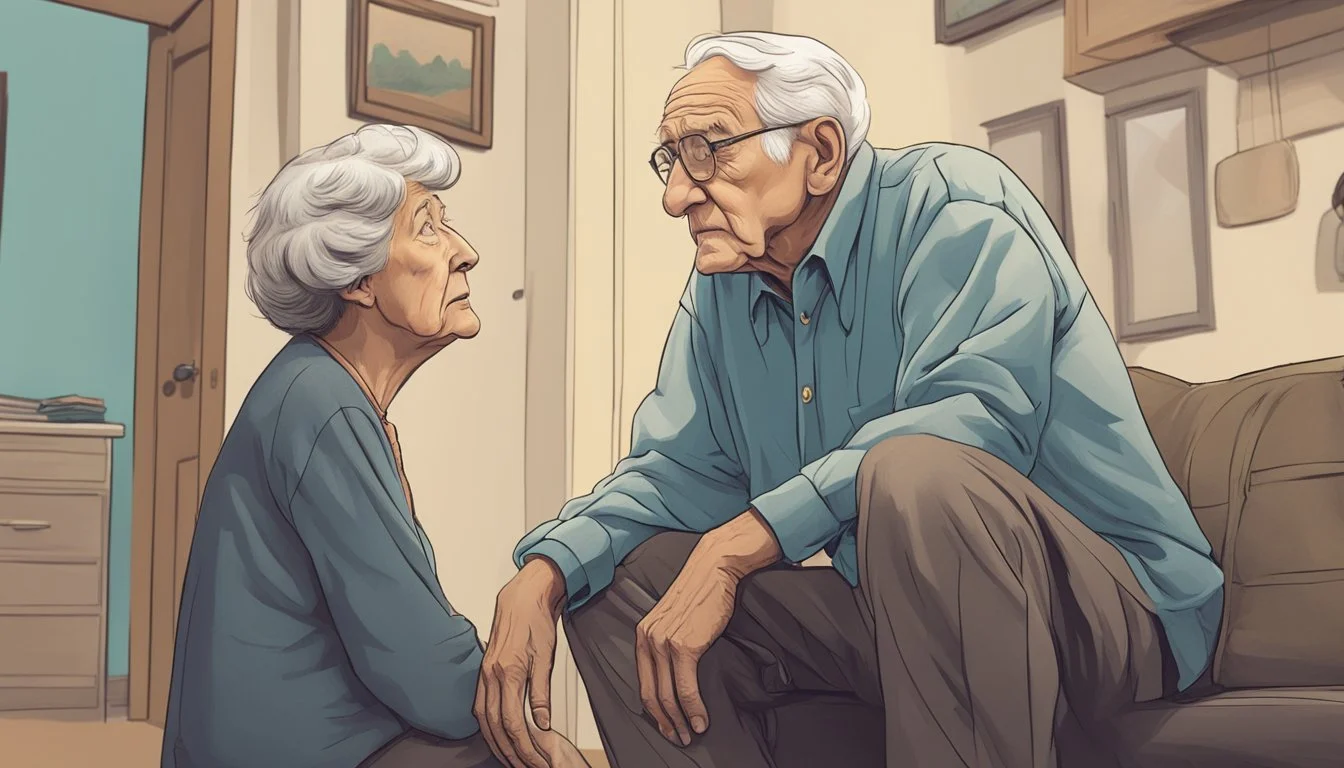6 Types of Trauma That Can Occur in Elder Abuse
Recognizing and Addressing Harm
Elder abuse is a critical issue affecting countless older adults globally. It often goes unnoticed, hidden behind the walls of private homes and facilities where trust and care should prevail. The consequences of elder abuse can be profound, leading to both immediate harm and long-term trauma
Understanding the various types of trauma associated with elder abuse is essential for recognizing and preventing it. This article will explore six specific types of trauma that can occur, providing insights into the complexities and challenges faced by older adults. By shedding light on these traumas, the goal is to enhance awareness and promote measures to protect vulnerable populations.
1) Physical Abuse
Physical abuse in elder care involves the use of force that results in bodily injury, pain, or impairment. This type of abuse can manifest through various actions, such as hitting, slapping, pushing, or even restraining with ropes or chains.
Injuries from physical abuse may include bruises, cuts, fractures, or burns. Caregivers or trusted individuals are often the perpetrators, acting out of frustration, control, or other motives. Even actions intended to help, if done with excessive force, can be abusive.
Signs of physical abuse can be frequent hospital visits, unexplained injuries, or the elder showing fear around the caregiver. It's crucial for family members and medical professionals to remain vigilant and report any suspicions immediately.
Efforts to combat physical abuse of elders should involve legal action against perpetrators and supportive care for the victims. Education and training of caregivers on appropriate care techniques play a significant role in preventing abuse. Understanding the dynamics of physical abuse in elder care helps in safeguarding the well-being of older adults.
2) Emotional Abuse
Emotional abuse in elder care is a serious concern that can significantly impact an elder's mental health. This type of abuse involves tactics such as threats, verbal harassment, and isolation. The primary goal of these actions is to control the elderly individual and inflict emotional harm.
Emotional abuse can result in feelings of worthlessness, depression, and anxiety. Victims often feel isolated from friends and family, further exacerbating their emotional pain. The effects of this abuse are just as damaging as physical harm, although they are not always visible.
Studies have shown that a significant number of emotional abuse victims are women. The lack of physical signs makes it harder to detect, but it is crucial for caregivers and family members to be vigilant. Identifying emotional abuse early can prevent further psychological damage.
It is essential to be aware of the signs, which include sudden changes in mood or behavior, withdrawal from social interactions, and a noticeable decline in self-esteem. These indicators can help in recognizing and addressing emotional abuse promptly.
Providing support and education to caregivers and families about the risks and signs can help mitigate the occurrence of emotional abuse. For more detailed information, refer to resources such as Nursing Home Abuse Center and Healthline.
3) Sexual Abuse
Sexual abuse in elder abuse is any form of non-consensual sexual contact. This can include unwanted touching, forced sexual acts, or coercion. An inherent power differential often exists, especially when the abuser is a caregiver or a trusted person.
Prevalence data indicates that 0.6% of older adults report experiencing sexual abuse within a year, according to a study by the Mayo Clinic. In many cases, the abuse occurs in settings where the elder is dependent on others for care, increasing vulnerability.
The impact of sexual abuse on older adults can be severe. It can lead to physical injuries, emotional distress, and long-term mental health issues like depression and PTSD. Because older adults may already have compromised health, the consequences of sexual abuse can be particularly devastating.
Efforts to combat sexual abuse in older adults include increasing awareness, providing support systems, and ensuring that caregivers are properly vetted. Organizations and resources are available to help identify signs of abuse and provide necessary interventions for victims.
4) Financial Exploitation
Financial exploitation involves the unauthorized use of an elderly person's funds or property. This can occur through financial abuse by someone they know or through financial fraud by a stranger. Both forms of exploitation can lead to severe financial, emotional, and physical consequences for older adults.
Common tactics used in financial exploitation include manipulation, deceit, and even threats. Perpetrators might be family members, caregivers, or scammers who charm or intimidate the elderly into relinquishing control over their assets. This often leaves victims in a precarious financial situation.
The Elder Justice Initiative identifies both financial abuse by acquaintances and financial fraud by strangers as significant threats. These tactics are not only deceptive but can lead to long-term harm, draining victims' savings and resources.
Hotlines like the National Elder Fraud Hotline provide essential services to assist victims. From March 2020 through April 2023, such initiatives have responded to thousands of calls, offering crucial support for those affected.
Raising awareness and promoting protective measures can help mitigate the risk of financial exploitation. Education on recognizing signs of abuse and fraud is crucial for both older adults and their loved ones.
5) Neglect
Neglect is a significant form of elder abuse where a caregiver fails to meet the basic needs of an older adult. This neglect can be intentional or unintentional, but it results in a lack of necessary care.
Key indicators of neglect include poor personal hygiene, unattended medical conditions, and unsafe living conditions.
In many cases, neglect happens in the home environment. Family members or caregivers may not provide adequate food, clothing, or medical care.
The effects of neglect can be severe, leading to physical harm and emotional distress. Older adults might suffer from malnutrition, dehydration, or untreated medical issues.
Understanding the signs of neglect is crucial. Observing a withdrawal from activities, unexplained weight loss, and frequent infections can be telling indicators.
Neglect not only harms the physical health of older adults but also affects their mental well-being. They may suffer from depression, anxiety, or a general sense of helplessness.
For more about elder abuse and neglect, visit Detecting Elder Abuse and Neglect.
6) Abandonment
Abandonment is a serious form of elder abuse that occurs when someone responsible for the care of an elderly person deserts them. This can happen in various settings, including at home or in institutional care.
Those abandoned often face emotional and physical distress. They may be left without proper food, medication, or support, which endangers their well-being.
Caregivers might abandon elders due to being overwhelmed or unable to cope with the demands. Regardless of the reason, the impact is severe and can lead to abandonment trauma.
The abandoned elder may experience feelings of rejection and isolation. This can exacerbate existing health issues or lead to new psychiatric problems.
Abandonment is a crime and should be reported immediately. Knowing the signs can help in taking prompt action to protect vulnerable seniors.
For more information on abandonment, visit Talkspace.
Psychological Trauma
Psychological trauma in elder abuse manifests significantly through emotional and verbal abuse. These forms of abuse can severely impact an older adult's mental health, causing long-lasting effects.
Emotional Abuse
Emotional abuse involves actions that harm an elder's emotional well-being. This can include intimidation, isolation, and being treated like a child. Such practices can lead to feelings of worthlessness, fear, and depression.
The impact of emotional abuse is often not immediately visible, making it challenging to detect. It may also involve threats and humiliation, stripping away the elder's sense of dignity and security. Prolonged emotional abuse can result in severe anxiety, PTSD, and other mental health conditions.
Many older adults experiencing this kind of trauma may become withdrawn, exhibit heightened agitation, or display sudden mood changes. Observers should be alert to these signs to intervene and protect the individuals affected.
Verbal Abuse
Verbal abuse involves using words to cause emotional harm. It can include yelling, insults, and belittling comments. This type of abuse is particularly damaging as it can undermine an elder’s self-esteem and mental health.
Repeated exposure to verbal abuse can lead to emotional instability and feelings of helplessness and chronic stress. Older individuals may start believing the negative messages conveyed, which can lead to depression and social withdrawal.
Elders subjected to verbal abuse may exhibit changes in communication patterns. They might become quieter and avoid interactions to escape further verbal mistreatment. Being attentive to these behavioral changes can help recognize and address the trauma promptly.
Psychological trauma in elder abuse is deeply damaging and requires immediate attention and intervention to protect the mental health and dignity of older adult individuals.
Physical Injuries
Physical injuries in elder abuse can lead to severe health complications, including debilitating pain and long-term disabilities. These injuries often manifest as bruises, fractures, and chronic pain conditions.
Bruises and Fractures
Bruises and fractures are common physical indicators of abuse among the elderly. Bruises can occur from being hit, pushed, or otherwise physically restrained. They may appear on various parts of the body, often in unusual places like the upper arms and back, raising suspicion of abuse.
Fractures, particularly in fragile bones, can result from direct blows or falls caused by mishandling. These injuries may be mistakenly attributed to aging or accidental falls, but repeated patterns should be carefully evaluated by healthcare professionals. Prompt detection and treatment are crucial to prevent further trauma and ensure the victim's safety.
Chronic Pain
Chronic pain is another significant consequence of physical abuse in elders. This pain usually stems from untreated injuries, such as broken bones and muscle damage. Conditions like arthritis can also be exacerbated by physical maltreatment, leading to persistent discomfort.
Elders experiencing chronic pain may show signs of decreased mobility, reluctance to move, and expressions of pain during routine activities. Chronic pain not only diminishes their quality of life but also increases dependence on pain medications, sometimes leading to addiction. Addressing the root cause of the pain through proper medical care and monitoring is essential for the well-being of the affected individual.
Financial Exploitation
Financial exploitation involves the illegal or improper use of an elder's resources, resulting in financial loss or risk of loss. This can happen through intentional deprivation or by coercion and fraud, leading to severe emotional and financial harm.
Intentional Deprivation
Intentional deprivation refers to the deliberate act of withholding finances from an elder to control or harm them. This might include:
Misuse of Power of Attorney: A trusted individual misuses their legal power to access and deplete the elder's bank accounts.
Theft of Assets: Personal property, such as cash, jewelry, or other valuables, is stolen by caregivers or family members.
Denial of Funds for Essentials: Elders are not provided with the money they need for basic necessities like food, healthcare, and housing despite having adequate resources.
Intentional deprivation can be subtle and might go unnoticed without careful monitoring. The emotional impact on the elder can be extremely damaging, leading to feelings of helplessness and despair.
Coercion and Fraud
Coercion and fraud involve persuading or deceiving an elder to hand over their financial assets. Common tactics include:
Scams and Fraudulent Schemes: Strangers or even acquaintances use deceitful tactics, such as fake lotteries, to trick elders into giving away money or sharing personal information.
Pressure from Family Members: Relatives may use emotional manipulation, threats, or physical intimidation to coerce elders into financial decisions that are not in their best interest.
Investment Fraud: Elders are persuaded to invest in fake or highly risky ventures, often losing substantial amounts of money.
These deceptive practices can result in significant financial loss, leading to a loss of independence and security for the elder. Recognizing and preventing coercion and fraud is crucial for protecting vulnerable older adults.
Neglect and Abandonment
Neglect and abandonment represent severe forms of elder abuse characterized by the deliberate failure to provide necessary care and the desertion of an elderly person by someone responsible for their well-being. These acts can have profound physical and psychological impacts.
Deprivation of Care
Neglect involves the failure to fulfill a caretaking obligation, resulting in the deprivation of basic needs such as food, water, shelter, hygiene, and medical care. This can lead to malnutrition, dehydration, untreated medical conditions, and deteriorated living conditions.
Caretakers might ignore signs of illness or refuse to seek medical attention for the elderly. This can cause minor health issues to become severe. Lack of hygiene can result in infections and skin problems, further compromising an elder's health. The effects of neglect are often visible, including weight loss, poor hygiene, and untreated bedsores.
Isolation
Abandonment occurs when a person responsible for the elderly person deserts them, often in a public place or hospital, creating a scenario where seniors are left to fend for themselves. This act can lead to feelings of extreme loneliness and helplessness.
Isolation, either through physical separation or emotional distancing, deprives the elderly of social interaction and emotional support. This can result in depression, anxiety, and cognitive decline. Social isolation can have serious health consequences, including an increased risk of mortality. Elders may feel forgotten and neglected, exacerbating feelings of helplessness and despair.
To learn more about the types of elder abuse and their effects, explore resources on recognizing and addressing these issues.






